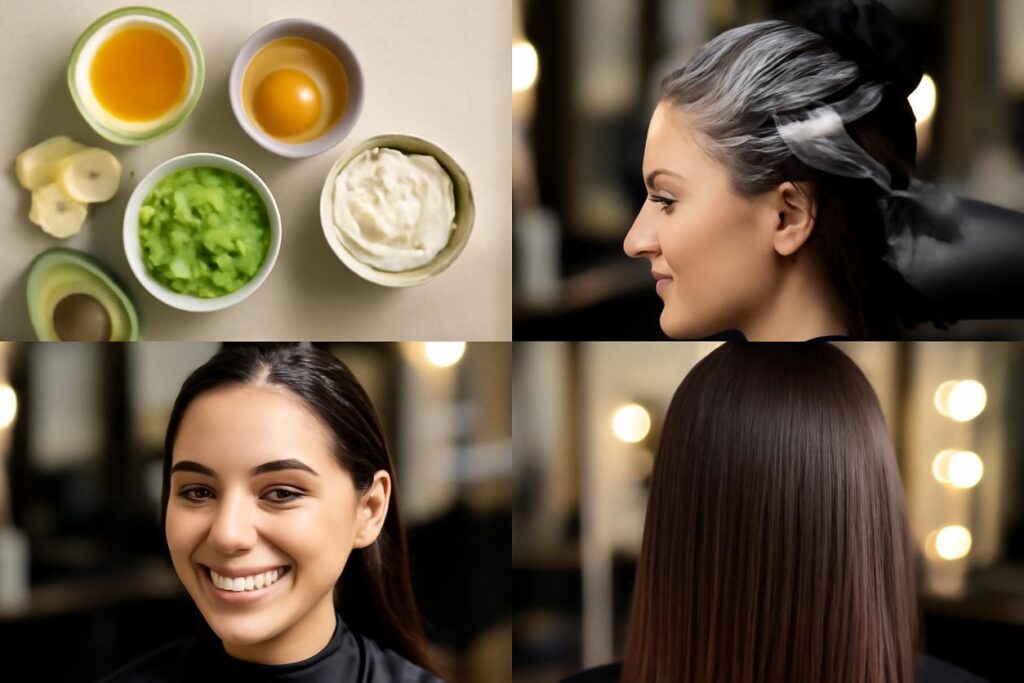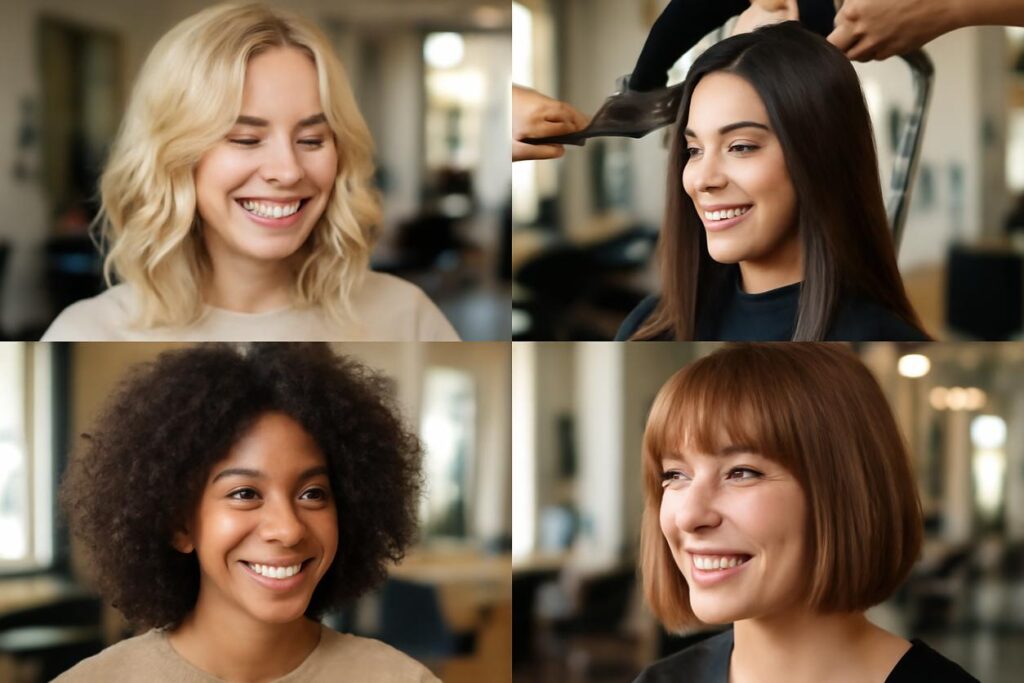Introduction: Why a tailored routine matters
Welcome to the ultimate guide of curly hair tips for 2025 and beyond. If you have waves, curls, or coils, you know that your hair has a unique personality. It can be joyful and bouncy one day, and unpredictable the next. The reason generic advice often fails is that curly hair isn’t just one thing; it’s a diverse spectrum of textures and behaviours. Building a routine tailored to your specific hair needs is the secret to unlocking consistent, healthy, and defined curls.
This guide is designed to empower you with foundational knowledge and practical strategies. Forget about chasing fleeting trends and focus on building a sustainable curly hair routine that works for your lifestyle. We will explore everything from understanding your hair’s core properties to simple styling techniques and nutritional support. These curly hair tips are about creating a long-term partnership with your hair, helping you celebrate its natural beauty every single day.
Identify your curl behaviour not just type
While curl pattern charts (like 2A to 4C) are a helpful starting point, they don’t tell the whole story. To truly understand your hair, you need to look at its behaviour. The three most important factors are porosity, density, and texture. Mastering these concepts is one of the most crucial curly hair tips you can learn.
Hair Porosity: Your Hair’s Thirst Level
Porosity refers to your hair’s ability to absorb and retain moisture. It is arguably the most important factor in choosing the right techniques.
- Low Porosity: The hair cuticles are tightly packed. It’s difficult for moisture to get in, but once it’s in, it stays. This hair type is prone to product buildup because products tend to sit on top of the hair shaft.
- Medium Porosity: The cuticles are looser, allowing moisture to enter and exit at a balanced rate. This is often considered the “ideal” porosity.
- High Porosity: The cuticles have gaps or holes, causing the hair to absorb moisture quickly but lose it just as fast. This hair type is often dry, frizzy, and prone to damage.
A simple at-home test involves spraying a clean strand of hair with water. If the water beads up, you likely have low porosity. If it absorbs quickly, you have high porosity.
Hair Density: How Much Hair You Have
Density is the number of individual hair strands on your scalp. It’s different from the thickness of each strand. You can have fine hair that is very dense, or coarse hair that is thin. To check, look at your scalp in the mirror. If you can see it easily, you have low density. If it’s difficult to see, you have high density.
Hair Texture: The Thickness of Each Strand
Texture describes the thickness or circumference of an individual hair strand. It’s typically categorized as fine, medium, or coarse. You can determine this by comparing a single strand to a piece of sewing thread. If it’s thinner, it’s fine. If it’s thicker, it’s coarse.
Gentle cleansing and hydration strategy
How you wash your hair sets the foundation for your entire routine. For curls, the goal is to cleanse the scalp without stripping the hair of its natural oils, which are essential for preventing frizz and dryness.
Co-Washing vs. Low-Poo
One of the most transformative curly hair tips is to reconsider traditional shampoo. Many shampoos contain harsh sulfates that create a rich lather but can be extremely drying for curls.
- Co-washing: This means washing your hair only with a cleansing conditioner. It’s an excellent option for those with very dry, coarse, or tightly coiled hair that needs maximum moisture.
- Low-poo: This refers to using a gentle, sulfate-free shampoo. It provides a more traditional cleansing feel without being overly stripping. This is a great choice for those with fine hair, wavy hair, or an oily scalp who find co-washing too heavy.
The Importance of Clarifying
No matter your cleansing method, product buildup is inevitable. A clarifying wash is a deep cleanse designed to remove this buildup, along with hard water minerals and silicones. Aim to clarify every 4-8 weeks, or whenever your curls feel limp, greasy, or unresponsive to your usual products. This “reset” allows your hair to better absorb moisture and nutrients from your conditioners and stylers.
Conditioning deep dive: techniques and timing
Conditioner is a curly person’s best friend. It provides moisture, helps detangle, and smooths the hair cuticle to reduce frizz and increase shine. However, how you apply it matters just as much as what you use.
Master the “Squish to Condish” Method
This technique is a game-changer for hydration. After applying your conditioner to wet hair, you cup your hands and “squish” the hair towards the scalp. You will hear a squelching sound. This action physically helps the hair cuticle absorb more water and conditioner, leading to better-hydrated and more defined curl clumps. Do this for a few minutes before rinsing.
Leave-In Conditioner: Your First Styling Step
A leave-in conditioner is a lighter, water-based hydrator applied after rinsing your regular conditioner. It provides a continuous layer of moisture and slip, which helps protect your hair during styling and throughout the day. Apply it to very wet hair to lock in as much water as possible.
Weekly treatments and proven DIY masks
Healthy curls thrive on a balance of moisture and protein. Weekly treatments are an essential part of any robust curly hair routine, helping to repair damage and maintain this delicate equilibrium.
Understanding the Moisture-Protein Balance
Your hair needs both moisture (for elasticity and softness) and protein (for strength and structure). An imbalance can lead to problems.
- Moisture Overload: Hair feels overly soft, mushy, or limp, and curls won’t hold their shape.
- Protein Overload: Hair feels brittle, dry, straw-like, and may be more prone to snapping.
Pay attention to how your hair feels. If it feels weak and overly soft, incorporate a protein treatment. If it feels dry and brittle, focus on a deep moisturizing mask.
Simple and Effective DIY Masks
You don’t need expensive treatments to give your hair a boost. These simple DIY masks can be made with ingredients from your kitchen.
- For Moisture: Mash half an avocado with a tablespoon of honey. Apply to clean, damp hair, leave on for 20-30 minutes, and rinse thoroughly.
- For Light Protein: Mix half a cup of plain yogurt with one egg. Apply to hair, let it sit for 20 minutes, and rinse with cool water before cleansing as usual.
Heat-free shaping and styling methods
One of the best curly hair tips for long-term health is to minimize heat. Fortunately, there are many effective heat-free methods to achieve beautiful definition and shape.
Application is Everything
How you apply your styling products (like gels, creams, or mousses) can dramatically affect your results. Always apply stylers to soaking wet hair to encourage clumping and minimize frizz.
- Praying Hands: Rub product between your palms and glide them down your hair sections, with the hair sandwiched between your hands.
- Raking: Use your fingers like a rake to distribute product evenly through your hair.
- Scrunching: Gently scrunch your hair towards the scalp to encourage curl formation.
Drying Without Damage
The drying process is where frizz often begins. Swap your rough terrycloth towel for a gentle alternative.
- Plopping: After applying your products, pile your curls onto a cotton t-shirt or microfiber towel and wrap it around your head. This absorbs excess water without disrupting your curl pattern and can enhance definition. Leave it on for 10-20 minutes before air-drying or diffusing.
- Air-Drying: The simplest method. The key is to touch your hair as little as possible while it dries to prevent frizz.
Nighttime protection and waking up to defined curls
How you sleep can make or break your curls. Protecting your hair at night reduces friction, minimizes frizz, and helps your style last for several days.
Invest in a Protective Style and Fabric
Tossing and turning on a cotton pillowcase can rough up the hair cuticle, leading to a frizzy mess in the morning. A few simple changes can preserve your curls.
- The Pineapple: Loosely gather your hair into a high ponytail on top of your head, secured with a gentle tie like a scrunchie. This protects the length of your hair while you sleep.
- Silk or Satin: Sleep on a silk or satin pillowcase. The smooth surface allows your hair to glide, reducing friction and preventing tangles and frizz. A satin bonnet or scarf offers even more protection.
Your 5-Minute Morning Refresh
Reviving second or third-day curls is easy. Simply mix some water (and optionally, a small amount of leave-in conditioner) in a spray bottle. Lightly mist your hair to re-dampen it, then gently scrunch to reactivate your curls and products.
Scalp care and nutrition for stronger fibres
Healthy hair starts at the root. A clean, balanced scalp is the foundation for strong hair growth. This is often an overlooked aspect of caring for curly hair.
Focus on a Healthy Scalp Environment
Your scalp is skin and requires care just like the skin on your face. When you wash your hair, gently massage your scalp with your fingertips (not your nails) to stimulate blood flow and effectively remove dirt and buildup without causing irritation.
Nutrition for Your Hair
What you eat directly impacts the health of your hair follicles. A balanced diet rich in certain nutrients can promote stronger, healthier hair growth. Key nutrients include:
- Protein: The building block of hair. Ensure you have adequate sources like lean meats, beans, and lentils.
- Iron: Essential for oxygen transport to your follicles. Found in spinach, red meat, and fortified cereals.
- Biotin: A B-vitamin linked to hair health. Found in eggs, nuts, and whole grains.
- Omega-3 Fatty Acids: Promote a healthy scalp. Found in fatty fish like salmon, flaxseeds, and walnuts.
For more detailed dietary guidance, The Healthy Eating Plate from Harvard is an excellent resource for building balanced meals.
Adjusting your routine by season and climate
Your hair’s needs can change dramatically with the weather. Understanding how humidity and temperature affect your curls allows you to make smart, seasonal adjustments to your routine.
Humidity and Dew Points
Humidity is the amount of moisture in the air. Many styling products contain humectants (like glycerin), which draw moisture from the atmosphere into your hair. This is great in moderate humidity, but can backfire in extreme conditions. In very high humidity, humectants can pull in too much moisture, causing curls to swell and frizz. In very low humidity (like dry winter air), they can pull moisture out of your hair, leaving it dry.
Winter vs. Summer Curly Hair Care
- Winter (Low Humidity): Focus on deep conditioning and sealing in moisture with creams or oils. You may want to use products with fewer humectants.
- Summer (High Humidity): Use lighter-weight products and consider stylers with anti-humectant properties to block out excess moisture and control frizz. More frequent cleansing may be needed due to sweat and activity.
Ingredients to welcome and ingredients to avoid
Reading ingredient labels can feel overwhelming, but knowing a few key players can simplify the process. Here is a quick guide to ingredients that benefit curls and those that are best to avoid.
| Ingredients to Welcome | Ingredients to Avoid |
|---|---|
| Sulfate-free cleansers (e.g., Cocamidopropyl Betaine) | Harsh Sulfates (e.g., Sodium Lauryl Sulfate) |
| Natural oils and butters (e.g., Shea Butter, Coconut Oil) | Drying Alcohols (e.g., Isopropyl Alcohol, Alcohol Denat.) |
| Humectants (e.g., Glycerin, Honey) | Non-water-soluble Silicones (e.g., Dimethicone) |
| Proteins (e.g., Hydrolyzed Keratin, Silk Amino Acids) | Mineral Oil and Petrolatum |
Quick routines: 5 minute, 20 minute, and weekend plans
A great curly hair routine is one you can stick with. Here’s how to adapt your efforts to the time you have available.
The 5-Minute Morning Refresh
Perfect for second or third-day hair. Lightly mist your curls with water from a spray bottle. Emulsify a pea-sized amount of leave-in conditioner or cream in your wet hands and gently scrunch it into your hair to tame frizz and redefine curls.
The 20-Minute Wash and Go
When you’re short on time. Hop in the shower and co-wash, focusing on your scalp. Quickly apply conditioner, detangle, and rinse. While your hair is still dripping wet, apply one multitasking styling product (like a gel or cream), scrunch, and go. Let it air-dry on your commute or at your desk.
The Weekend Reset
This is your time for a full-care routine. Start with a clarifying shampoo if needed. Follow with a deep conditioner or treatment mask, letting it sit for 20-30 minutes. Rinse and apply your stylers carefully, perhaps trying a technique like finger coiling for maximum definition. Plop and then air-dry or diffuse for your best curls of the week.
Troubleshooting common curl challenges
Even with a great routine, you’ll face challenges. Here are some common curly hair problems and their solutions.
- Problem: Uncontrolled Frizz.
Cause: Usually a lack of moisture, friction, or environmental humidity.
Solution: Ensure you’re deep conditioning regularly. Apply products to soaking wet hair. Use a microfiber towel or t-shirt to dry, and protect your hair at night.
- Problem: Limp, Weighed-Down Curls.
Cause: Products are too heavy for your hair type, or you have product buildup.
Solution: Use a clarifying shampoo to reset your hair. Switch to lighter-weight products like mousses or lotions instead of heavy creams and butters. Focus application away from the roots.
- Problem: A “Cast” That Won’t Go Away.
Cause: Gels and some mousses create a hard shell, or cast, while drying. This is a good thing! It holds your curl definition.
Solution: Once your hair is 100% dry, gently “scrunch out the crunch” with your hands to break the cast and reveal soft, defined curls underneath.
FAQ: Common reader questions answered
How often should I wash my curly hair?
This depends on your hair type and lifestyle. Most people with curly hair wash between one and four times per week. If your scalp is oily or you work out frequently, you may need to wash more often. If your hair is very dry, you can go longer between washes.
Can I brush my curly hair when it’s dry?
It’s generally not recommended. Brushing dry curls disrupts the curl pattern, separates the clumps, and can lead to frizz and potential breakage. It’s best to only detangle your hair with a wide-tooth comb or your fingers when it is wet and saturated with conditioner.
Why do my curls look great on wash day but not after?
This is usually due to a lack of nighttime protection. Sleeping on your curls without protecting them can cause frizz and flatten them. Try the pineapple method and a satin pillowcase to preserve your style for multiple days.
Resources and where to learn more
Continuing your education is a wonderful way to refine your routine. Here are a few reliable, non-commercial places to find more information:
- American Academy of Dermatology: Offers science-backed hair care tips from medical experts.
- Science-y Hair Blog: A fantastic resource that breaks down the chemistry of hair and products in an easy-to-understand way.
Conclusion: Simple next steps and habit tips
Embracing your natural hair is a journey, not a destination. The most important of all curly hair tips is to be patient and consistent. You don’t need to change everything at once. Start small. Pick one new technique from this guide—like trying the “squish to condish” method or switching to a satin pillowcase—and incorporate it into your routine for a few weeks.
Listen to your hair. Pay attention to how it feels and responds. Over time, these small, sustainable habits will build upon each other, leading to the healthy, vibrant curls you’ve always wanted. Celebrate every small victory and enjoy the process of getting to know your beautiful, unique hair.






